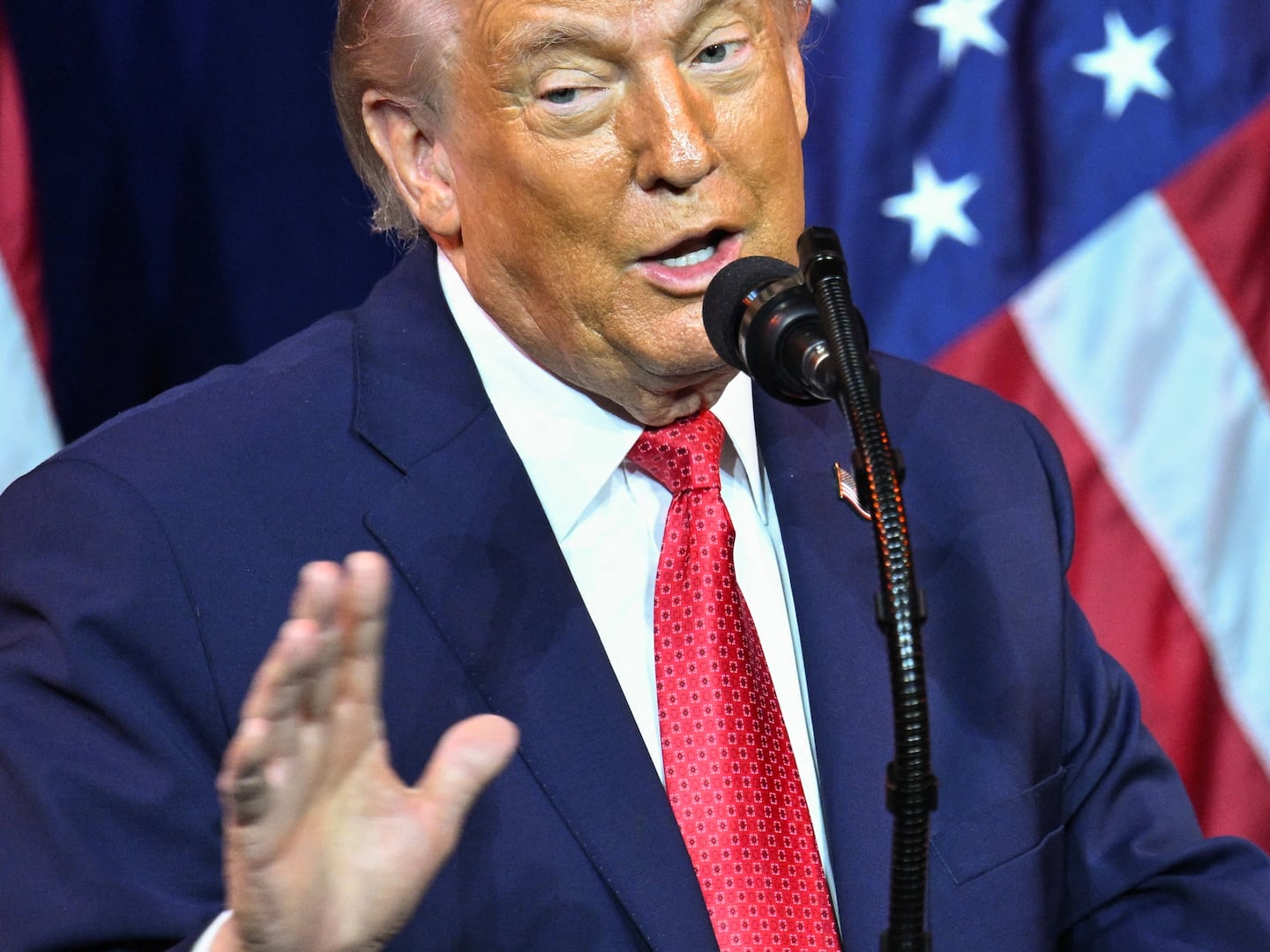The Foggy Bottom Smackdown, as it is known in Washington, quietly unfolded in recent weeks. Round One went to Secretary of State Hillary Clinton for taking away power that administrators of a rival agency, the U.S. Agency for International Development, had managed to hold onto during the Bush administration. Even worse, Rajiv Shah, the new head of USAID, is a Hillary “minion,” as one insider puts it, who has hardly put up a fight.

One year after the Haiti earthquake, Clinton and Shah are shining a spotlight on the disaster. The Washington fight over foreign assistance may seem arcane in contrast to the magnitude of the tragedy—focusing on flow charts and budget lines—but it affects millions of people around the world. Luckily, some specialists, both inside and outside of government, are pushing for more autonomy for the development agency.
They should fight harder, because “the evisceration of USAID,” as one development expert calls it, has serious consequences. Despite the rhetoric of administration officials, development work is being transformed from a mechanism that pulls people out of poverty into a tool of military intervention. That is Hillary’s goal, and she should be stopped.
When aid money is managed wisely, people who live in the Democratic Republic of Congo and in other marginalized countries directly benefit. When funds are managed poorly, the money goes to less-deserving regions or is squandered on bad projects, often in countries where American troops are located. Not that USAID’s Shah is complaining. He joined the administration as an undersecretary of Agriculture in 2009 and soon traveled with Clinton to Kenya, helping to write a speech that she gave that fall in New York.
When asked if development work has been too closely aligned with national security, Rajiv Shah lets out a heavy sigh. “A meaningless debate,” he says. “We are trying to achieve development results that keep our country safe.”
Several weeks later, he got a phone call: “Hi, Rajiv. This is Hillary.’” Sitting in his sixth-floor office in USAID headquarters at the Reagan Building, he shakes his head and laughs. “Doesn’t happen every day,” he says. She asked if he wanted to run the agency, and he started last January.
The 37-year-old native of West Bloomfield, Michigan, is hardly a “titan,” as one aid expert points out, though he has a background in development. He worked in South India for four months on a tuberculosis project in the mid-1990s and, as he recalls, “I felt that was something I wanted to commit myself to.” After medical school he joined the Bill and Melinda Gates Foundation in 2001. At USAID, he speaks of applying a business model: “We are trying to make our work as results-oriented as possible.”
At nine on a weekday morning, he was dressed in a crisp shirt, shiny black shoes and neatly pressed trousers, though he had arrived home from El Salvador at two that morning. (As the father of three, including a 2-1/2-month-old baby, he is used to sleepless nights.) He looked annoyed when I mentioned that some aid specialists want his position raised to a Cabinet level and that “you’d have a bigger office.”
“This is plenty large for me,” Shah says, looking around the room. He has a point: The palatial corner office has a wooden desk, a 10-person conference table, a couch, and seven other chairs scattered about. When asked if development work has been too closely aligned with national security, he lets out a heavy sigh. “A meaningless debate,” he says. “We are trying to achieve development results that keep our country safe.”
While he is dismissive of the conflict between USAID and the State Department, it has philosophical underpinnings: In the mid-1980s, as Carnegie Endowment Vice President Thomas Carothers recalls, the two agencies were housed in the same building, yet each had different Zip codes; the discrepancy was reflected in the mindset of staffers. “People in USAID thought they were fighting poverty and trying to do good, and State was serving national interests,” says Carothers, who worked for the State Department. “You’d go to the other floor and think, ‘Wow. This is a different world.’”
Not surprisingly, many State Department staffers look down on the do-gooders. “We used to laugh about it,” says a senior-level official who had previously worked on national-security issues for the Bush administration. “We’d hear USAID people saying, ‘We’re an independent organization reporting to the secretary of State,’ and we’d say, ‘Oh-k-a-a-a-a-y.’” For these State Department officials, Hillary Clinton, who had served on the Senate Armed Services Committee, was a godsend. “When Clinton was nominated to secretary, those of us opposed to a Department of Development said, ‘Game over.’”
Indeed, Hillary Clinton’s approach holds sway. As Carnegie’s Carothers points out, most assistance goes to a handful of countries, such as Afghanistan, Iraq, and Pakistan, that are strategically important to the Pentagon. For the 2011 fiscal year, the top two recipients of USAID and State Department assistance are Afghanistan, with a request for $3.92 billion, and Pakistan, with a request for $3.05 billion, while two of the poorest countries in the world are slated at only a fraction of that amount: Democratic Republic of Congo ($213 million) and Niger ($18.5 million).
People who live in Congo and Niger may suffer from civil war and famine, but there is little to be gained from helping them, while “over in Country B they have nuclear weapons,” says Carothers. Yet not everyone takes a realpolitik approach to development work; in Britain, according to The Economist, 90 percent of foreign assistance is supposed to go to the world’s most impoverished countries.
Still, Clinton and her acolytes have a point. Last month, Rep. Ileana Ros-Lehtinen, a Florida Republican who now chairs the House Foreign Affairs Committee, announced that she planned to cut foreign aid because “there is much fat.” With the federal budget under enormous pressure, it is easier to convince lawmakers to fund development programs when they are linked to strategic interests.
Yet development programs that are thrown together quickly, and designed for military and strategic goals, are likely to fail—or even worse, will lead to “perverse results,” as one specialist says, since experts generally work with local groups for years until the projects take root. (Like most people interviewed for this article, he asked not to be identified.)
Developing the infrastructure of a devastated country like Afghanistan takes time, and flooding the zone with money makes things worse. The main beneficiaries of U.S. foreign assistance have been the tribal leaders who became business partners with American contractors and friendly with U.S. officials, and the losers are ordinary Afghans who are left out of the deals. “The overriding criticism of aid efforts was the perception of massive corruption that is both fueled by, and undermines the impact of, aid programs,” wrote development specialist Andrew Wilder in a December 2009 essay, describing tribal leaders in Urozgan province who “not only got all the power in government,” as one Afghan official explained, “but also controlled and benefited from all the aid programs.”
For these reasons, some people in Washington are quietly encouraging Shah to strengthen the agency so that foreign assistance can be managed in a more rational way, allocating additional resources to countries in need, such as Congo and Niger, and not overwhelming countries like Afghanistan with dollars and corruption scams.
Clinton’s December report on foreign policy, known as the Quadrennial Diplomacy and Development Review, granted Shah authority over initiatives, such as an agricultural program called Feed the Future, for example, yet the report also ensured his budget would remain under the State Department. Overall, USAID lost ground. “There’s no fighting against Hillary Clinton in this environment,” says Brookings’ Noam Unger, who studies the U.S. policies of foreign assistance. “It doesn’t happen.”
Development work directly linked to strategic interests shows a dodgy rate of success, and there is another question: Is this the kind of country Americans want? The U.S. recently pulled out of one disastrous war and is currently enmeshed in another, and altruism has benefits: Helping people because it is the right thing to do, not because it serves our interests, might make us feel a little less crummy about ourselves.
Tara McKelvey, a frequent contributor to The New York Times Book Review, is the author of Monstering: Inside America's Policy of Secret Interrogations and Torture in the Terror War (Basic Books).






